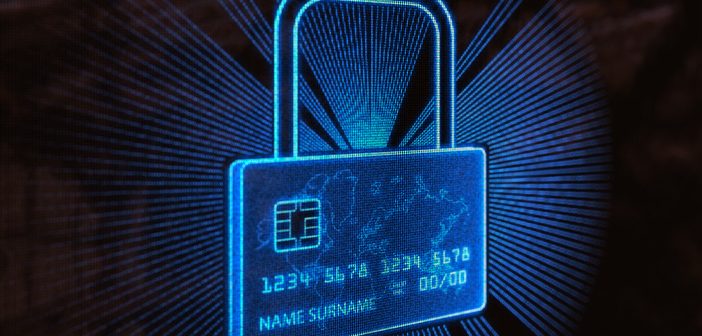How many credit cards do you have in your wallet? As of the end of Q3 2024, there were about 600 million credit card accounts in the U.S.*
As convenient as having a credit card is, it comes with risks. Credit cards are a major target of fraudsters. Schemes include skimming (copying the credit card details electronically and duplicating the card), card theft, identity theft, phishing, vishing (voice phishing), card not present fraud, and more. Here are five tips to help protect yourself from credit card scams.
Types of credit card fraud.
Knowing the various types of credit card fraud is an important first step to helping you stay safer. The most straightforward of them is card theft. When you order a new card or your credit card provider sends you one in the mail, someone may steal the new card from your mailbox. Similarly, if you lose your card, an unscrupulous person may get their hands on it and take advantage of your credit.
- Card ID theft happens when the fraudster learns the details of your card and tries to use those details to make purchases. Scammers may also try to obtain a card by creating a synthetic identity, a combination of real and fake information.
- Phishing is a scheme where a scammer takes credit card details from unsuspecting customers. It’s an online system where the perpetrator, posing as a legitimate business, captures your credit card number, expiry date, and CVV number. Most phishing scams start with a fake email that appears legitimate. Fraudsters pose as banks, internet service providers, mortgage companies, and other legitimate businesses to trick you into sharing your credit card information.
- Vishing (voice phishing) is similar to phishing; only someone pretends to be from the bank, credit union, tech support, credit card company, or other legitimate business and calls you to get more information about your card. These scammers are trying to trick you into sharing sensitive information over the phone.
- Card-not-present (CNP) fraud happens when the perpetrator uses your CVV number to pretend they possess your card. Merchants use the CVV number when you make online purchases or by phone to verify that you are in possession of your card. This verification is not required for in-store purchases. But if the fraudster somehow finds out your credit card number and expiration date, he can try to find the three-digit CVV number by trying various number combinations; they may have to try 1,000 different combinations before they succeed.
- Credit card skimming is a fraud scheme in which a modified point-of-sale machine (such as a credit card reader at a gas station, ATM, or point-of-sale terminal (POS)) is altered to capture your card details. The details are then used to create a duplicate card that can be used to charge goods or services to your card. Fraudsters may even install a spy camera in an ATM to capture your PIN.
Protecting yourself from fraud schemes.
Now that you know some of the ways fraudsters try to steal your credit card information, let’s review some ways to protect yourself. Short of never using your credit card again, here are a few precautions you can take.
1. Never share your credit card details.
Genuine employees from banks, credit unions, or credit card companies will never call you and ask you for your credit card number, expiration date, or CVV number as part of any verification process. You should know this information well and never divulge it to anyone online or offline.
Always ensure that you type your bank’s URL (or any shopping site) in your browser’s address bar rather than clicking a link in an email you receive. Phishing perpetrators usually create a website that looks similar to your bank, credit union, or a shopping website to fool you into giving your credit card details.
When entering a URL, look at the address bar to ensure the browser verifies the site’s security certificate. Without ensuring the site’s authenticity, do not enter your credit card details.
2. Keep checking your account.
Rather than checking your monthly statement for anything out of the ordinary, you should check your credit card accounts online once a week to ensure there are no unusual transactions. Small charges also shouldn’t escape your scrutiny. Small charges on your account may indicate someone is trying to test your CVV number. Be vigilant and ensure you inform your bank about any unusual charge.
3. Never let your card out of your sight.
When giving your card for payment, ensure it is still in sight. Do not give your PIN to anyone; instead, insist on typing your PIN yourself on the POS machine. It may be difficult to check whether the POS device used by the merchant is genuine or can skim your card. But if you think anything unusual is happening, take your card back.
4. Check your credit report.
You are entitled to a free annual credit report from Equifax, TransUnion, and Experian through AnnualCreditReport.com. You can use this to verify if your identity has been used by someone else to make transactions. We also provides your credit score on demand (not just annually) – free of charge in Tulee, without impacting your credit score.
A credit report will show detailed evidence of fraudulent activities in your name. To protect yourself better, you can initiate a fraud alert with your credit bureau so that banks, credit unions, and creditors are informed whenever a credit request comes in your name. You need to initiate the fraud alert with only one of the agencies; the other two will receive automatic notifications.
5. Check where you swipe your card.
There are many skimming methods to steal your card information; some attach a skimming device inconspicuously to the ATM. Gas stations, department stores, and other retail businesses, also may have compromised POS machines with the skimmer placed on them.
Usually, the skimmer on a POS machine can be detected if you look carefully for any unusual projecting parts. There are also videos on YouTube that can help you identify a skimmer at a POS.
Final thoughts.
It pays to be extra cautious in today’s world full of scammers and thieves. In the case of credit cards, the main issue is their prevalence. More than 80% of people in the U.S. have a credit card, but only a fraction understand the technology and its vulnerabilities.** If you are more careful with your credit card, you can limit your exposure to scams.
Be aware. If you receive a call from someone claiming to be a Credit Union employee asking for your account information (such as your online banking username, password, one-time passcode, credit card number, account number, etc.), do not give them any information. Even if the caller has an identifying piece of information or the call appears to be from our 800 number. This call is NOT legitimate. Scammers can spoof phone numbers to make it appear that the call is coming from a trusted source. The Credit Union will not call you and ask for this information. If you receive such a call, hang up and contact us directly at 800.877.2345.
Here are a few more ways to help you stay safe. Check out our Security Center for updates on the latest threats. This best-in-class platform was developed in cooperation with the same experts that keep the Credit Union cyber safe. Fraudsters are always working on new ways to take advantage of people. Visit our Current Scams page for news, tips, and notifications to help you stay alert to the latest scams.
Finally, be on the lookout for our new Card Control Tool (scheduled to launch soon) in Tulee. Card Control will enable you to receive alerts whenever your Credit Union Credit Card or Debit Card is used, making it easy to spot unauthorized transactions. If you spot one, contact us and report the possible fraud immediately.
This article was developed in partnership with our friends at Balance Pro.
*McCann, Adam, “Number of credit cards and credit card holders,” Wallethub.com. Published 13 November 2024. Accessed 2 January 2025.
**Luong, Robert, “U.S. credit card statistics and trends 2024,” helcim.com. Published 26 August 2024. Accessed 2 January 2025.





